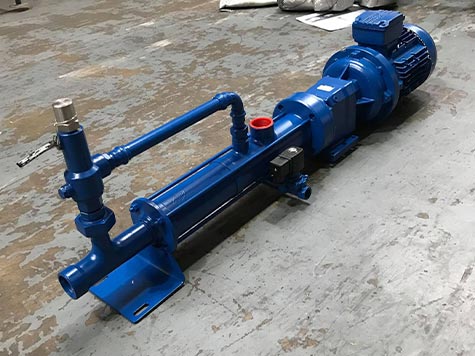

In circular tubes, the Reynolds number is calculated by Re=4Q/((μ/ρ)∙π∙D) where Q is the volumetric flow rate and D is the tubing inner diameter. It is important to check the Reynolds number is less than 2320 to ensure it is laminar. This can generate pressure (or vacuum) spikes leading to dosing irregularities, cavitation and accelerated pump wear.įormulas for calculating the pressure drop of flow through a tube are readily available online. This is because their pulsed flow has peak flow rates considerably higher than the average flow rate.

Reciprocating pumps, having pulsed flow, are even more sensitive to pressure drops and thus fluid viscosity. Turbulent flow is dependent on density much more than viscosity and is not worth considering in this article. The pressure drops affect both the pump outlet (adding pressure) and inlet (negative pressure). Therefore, a 100 cPs fluid will have 100x the pressure drop in a tube compared to water. If flow is laminar then the pressure drop in the tube is linearly dependent on viscosity. One often overlooked feature of a hydraulic system is the pressure drop through tubes. The viscosity of water changes 3x over the same temperature range. For instance, the viscosity of a 50% water/glycol solution changes nearly 5x between 0 and 50☌. System designers must also be aware of how temperature affects fluid viscosity. The majority of pump and system problems occur from high viscosity fluids because very few fluids have a viscosity less than water (1 cPs). Dynamic viscosity is often expressed in centipoise (cPs) where 1 cPs = 10-3 Pa-s. In laminar systems the use of dynamic viscosity is most common. The two are related by ν=μ/ρ where ρ is the fluid density. Viscosity is typically expressed in two ways: kinematic (ν) and dynamic (μ). Force (such as pressure) must be applied to overcome the viscous interaction with the surrounding surfaces (such as the walls of a tube). In fluid systems, higher viscosity increases the drag on surrounding surfaces.

Water is an example of low viscosity while honey is one of high viscosity. Viscosity is the internal friction of fluids or a measure of its time-dependent resistance to deformation. This, however, is a misconception and can lead to severe issues in a hydraulic system unless the effects of viscosity are well understood, and the system designer properly communicates the information to the pump engineers. Therefore, one might conclude that fluid viscosity has little effect on the output of the pump. Positive displacement pumps move fixed volumes of fluid mechanically through a system. Can Viscosity Affect Positive Displacement Pumps?


 0 kommentar(er)
0 kommentar(er)
